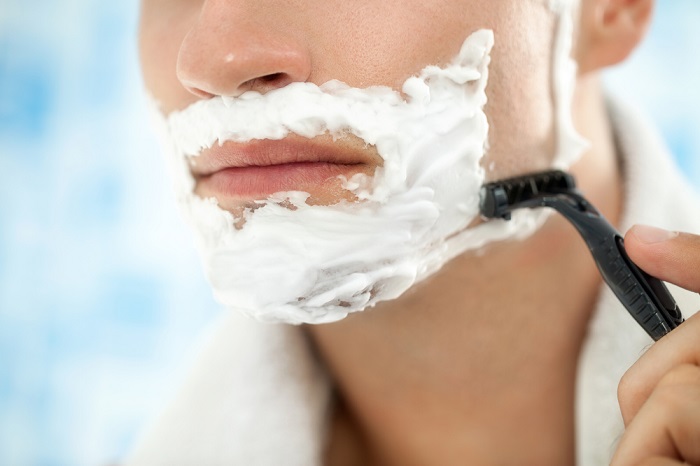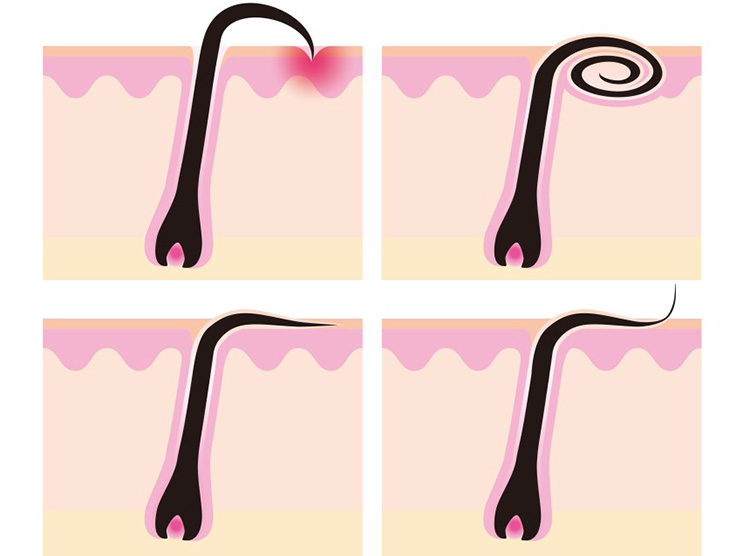Ingrown hairs how to prevent and treat them

Ingrown hairs can be unsightly (and painful) but there are steps you can take to treat and prevent them in a completely natural way.

Hair normally grows from a pore called a follicle. An ingrown hair occurs when the tip of the hair is trapped in the follicle, but the hair continues to grow. This can cause inflammation, pain, irritation, and infection in some cases. A technical term that doctors use for a type of condition related to ingrown hairs is pseudo folliculitis of the beard, which affects some men in the beard area.
Table of Contents
How are ingrown hairs produced?
Ingrown hairs are commonly linked to “razor cuts” or “one-shave cuts,” irritation that occurs after shaving. People with curly hair who shave often, such as African American men who shave the beard area, are particularly at risk for frequent ingrown hairs.
Experts estimate that up to 60 percent of African American men who shave have experienced ingrown hairs. But anyone can have ingrown hair almost anywhere on the body. Chin, legs, armpits, are all places where ingrown hairs occur frequently in women and men.
How to treat and prevent ingrown hairs
Treating ingrown hairs may be the only way to get some relief from associated pain and discomfort, as most of them will not go away on their own. You may have to visit a GP or dermatologist to remove ingrown hair by releasing it under the skin with a needle.
Some estheticians (beauty experts trained in services including facials and waxing) can do this as well. If the ingrown hairs become infected, you may need an antibiotic cream or a prescription antibiotic as well, to avoid complications.
How to avoid ingrown hairs
Prescription remedies for ingrown hair include glycolic acid creams and cortisone creams, but laser hair removal is the best option for the treatment and prevention of ingrown hair.
Laser hair removal and other ingrown hair reduction methods. Laser hair removal helps reduce the number of hairs that can become ingrown. Laser hair removal does not permanently remove hair, but it can provide relief for months and, for some people, years.
The best way to avoid ingrown hairs would be to let them grow out to prevent shaving from causing them. However, since not all men want a beard and many women do not want hair on their legs or arms, this may not be an option. If you have to shave, look for razors, such as electric razors, that are designed to prevent cutting.
How to shave properly
- Shave in the direction of hair growth (downward).
- Shave after a hot shower to make it easier to remove hair from follicles.
- Avoid a close shave. This makes the problem worse.
Other methods of treating ingrown hairs include:
- Shave less often.
- Avoid shaving the same area repeatedly and with multiple passes.
- Use a lubricating prescription shaving gel or foam.
- Use an electric razor, as these are gentler on the skin and won’t cut hair as close as a regular razor.
- Try using depilatories or creams that remove hair. Be sure to test a small patch of skin to see if you are sensitive to these chemical hair removal systems.
If you are still struggling with the problem of ingrown hair, consult with a specialist and beauty team (a dermatologist or esthetician) to see what adjustments might be best for you.

